Goniobranchus
sp. e166
75mm
Goniobranchus sp. e166
is a relatively large species that we have seen fairly commonly at Kwajalein,
Enewetak, and Bikini
Atolls. This appears to belong to a complex of species similar to G. tinctorius
and G. reticulatus found throughout the Indo-Pacific. Although there
may be some chance there are just one or a few highly variable species, we believe
the ones from the Marshalls are different from others in the species complex.
The specimens we have seen at Kwajalein, Enewetak and Bikini Atolls are all
consistent in coloration but different from, for example, G. tinctorius
from elsewhere. We have seen individuals at least up to 75mm in length. They
live on lagoon interisland reefs and pinnacles from about 2 to 15 meters depth,
but seem most common in lagoon patches of Halimeda algae. For a while,
three individuals living in the harbor at Kwajalein could often be seen out
crawling on Halimeda, especially early in the morning. After a few
months of being regularly sighted, they suddenly vanished. The first three below
are large specimens. Gosliner
et al (2018) list the Marshall Islands specimens as Goniobranchus
sp. 7 and also record it from New Caledonia.
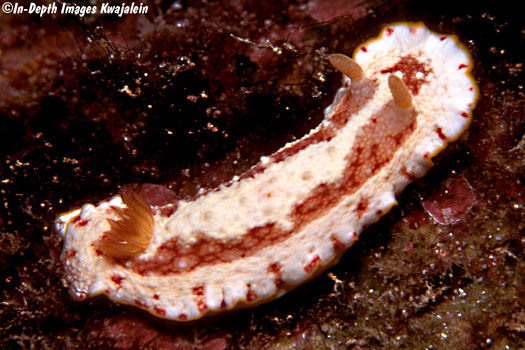
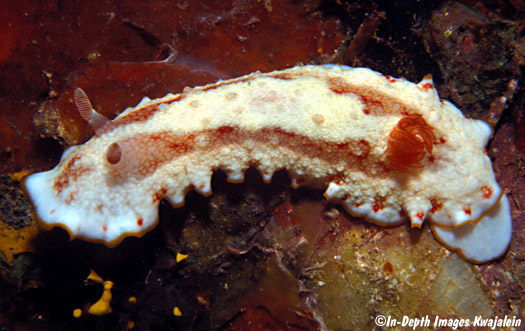
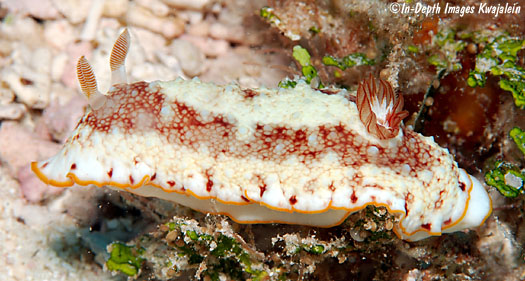
The next one was found actively feeding on a clump of sponge in a lagoon Halimeda
patch. Although not easy to distinguish in the photo, the sponge was a dark
brown irregular mass that had grown around and engulfed clumps of dead Halimeda
and small rocks. The nudibranch was actively rasping away at it.
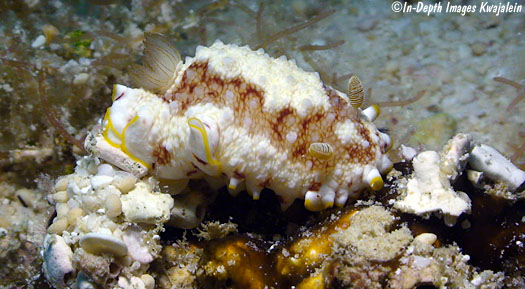
This pair appeared to be thinking about mating.
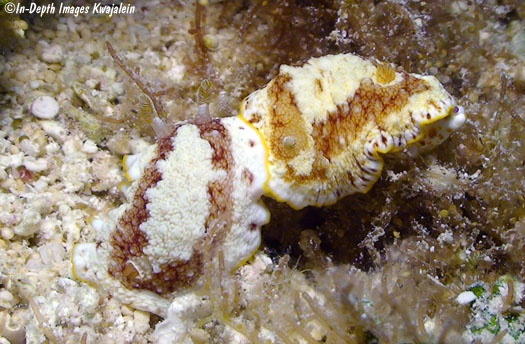
The next five shots show increasingly smaller specimens.
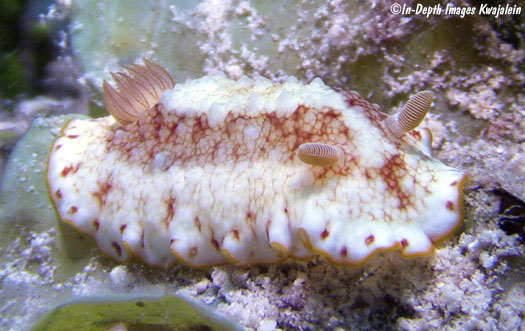
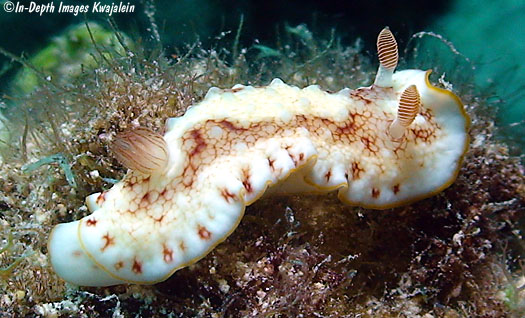
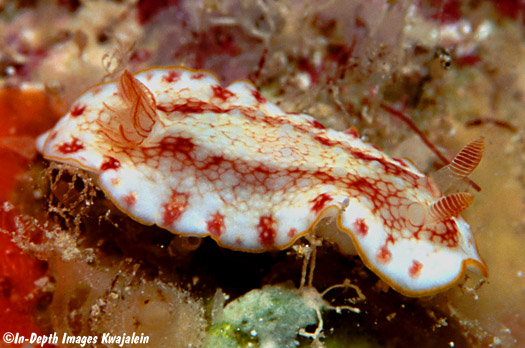
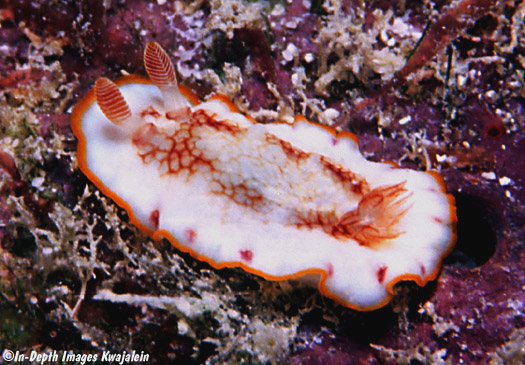
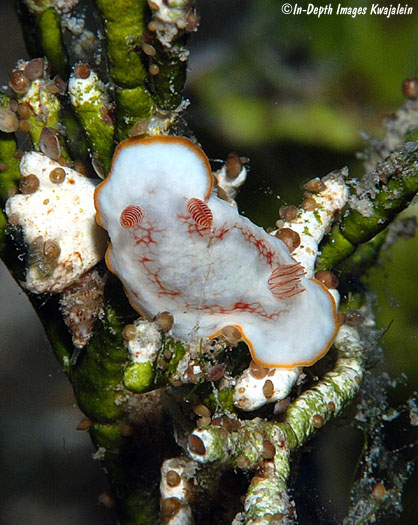
We initially thought the tiny specimen
below was a different species. In fact, its radula had a wide innermost lateral
tooth, more like a species of Verconia. However, the coloration of
the recently found, slightly larger specimen immediately above certainly ties
this one to Goniobranchus
sp. e166. The one below, collected at Bikini Atoll, the site of 24 nuclear
tests in the 1940s and 1950s, could have had an aberrant radula. It would be
interesting to investigate the possibility that tooth morphology may be different
in very small individuals and may change a bit as the animal ages.
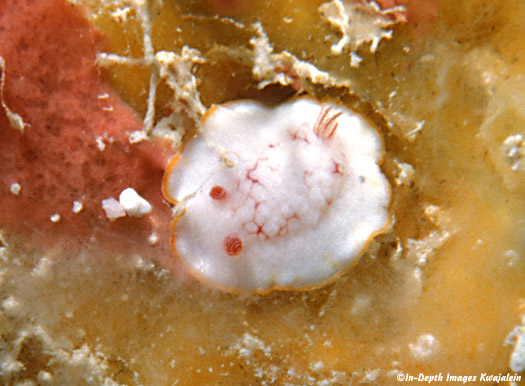
Here is another juvenile found
under a rock eating the sponge Chelonaplysilla violacea (not shown)
on a Kwajalein Atoll lagoon reef on 15 August 2010.
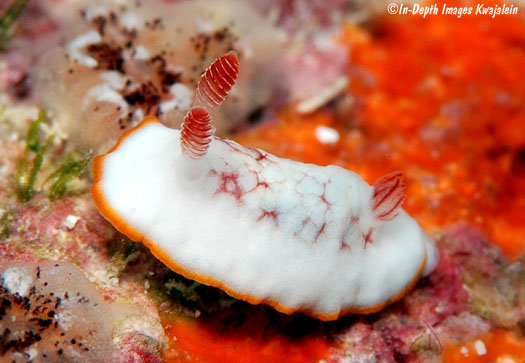
Another juvenile measuring just
6mm found under a rock on a Kwajalein Atoll lagoon pinnacle just starting to
recover from severe damage during a cargo ship grounding about 16 months earlier.
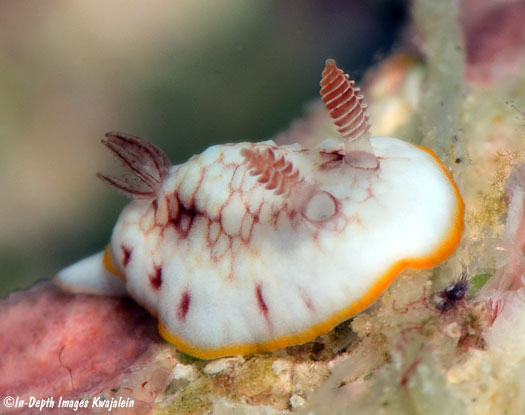
Created 19 December 2005
Updated 3 December 2018
Return to chromodorid thumbnails
UnderwaterKwaj home













